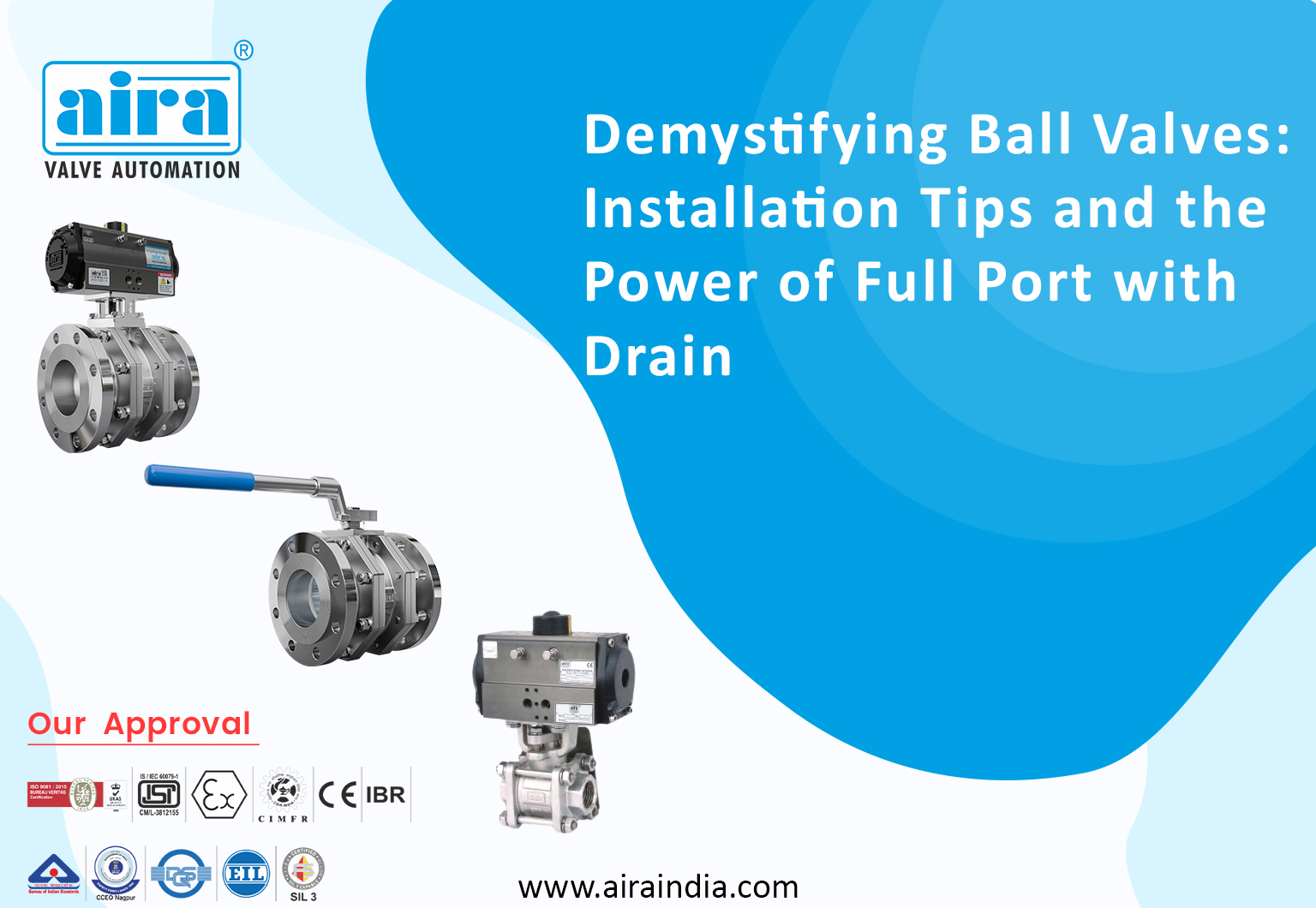Ball valves with drain ports use this feature to drain fluids or debris from the system. They are often used where the remaining fluid is after turning off the valve. This article explains the characteristics, selection, criteria, and ball valve uses with drain ports.
What is The Ball Valve with The Drain Port
A Ball valve with a drain port helps to remove undesired or extra fluid from a pipeline. The valve allows you to easily drain the content of a pipeline or tank without having to remove the complete valve.
The valve accomplishes this by one of the following mechanisms:
Using the handle: Rotate the ball valve by 90 degrees to open or close it. If the handle is perpendicular to the pipe, the inlet is closed, and the outlet port is vented to the outside via the drain port.
Using a drain tap: Many ball valve models include a separate tap to activate the drain port. The valve is closed with the handle, and the tap is opened to remove the remaining fluid from the drain port, which is linked to the outlet port. To minimize unintentional fluid loss or discharge, ensure that the valve is completely closed before opening the drain port.
The durian port of a ball valve is typically smaller than the main valve port, so the remaining fluid may take some time to drain completely.
Components of Ball Valves with Drain
Valve Body
This is the component of a Ball valve with a drain used to house internal parts of the valve. The valve body is always made of stronger materials than other materials, depending on the valve’s intended purpose. The valve body materials are chosen based on the application pressure, temperature, and fluid qualities such as corrosiveness. Some of the materials used to make a strong metallic valve body of a ball valve with a drain include stainless steel and brass.
Also, read Actuated Ball Valves vs. Manual Ball Valves
Rotary Ball
This is the component of a ball valve with a drain that closes or opens fluid flow. The ball has a hole in its center. When the hole is in line with the pipe, fluid flows through the ball valve and drains through it.
Stem
A stem is another part of a ball valve with a drain that transmits the force necessary to open or close the valve. A stem is a shaft composed of a durable material that can withstand the valve’s operating pressure and temperature. The stem connects the ball to the handwheel.
Valve Drain
A drain is a port on a ball valve that allows water to drain with a tap. The valve drain is used to drain fluid from a process line. The tap is used to close or open a ball valve’s drain.
Seats
Seats are disc components that are placed between the valve body and the ball to seal the two together, support the ball, and prevent fluid leakage.
Packing
Packing is a seal that surrounds the stem to prevent fluid leakage.
Applications of Ball Valves with Drain
- A Ball valve with a drain is used in commercial water supply systems.
- Oil and gas supply systems use a Ball valve with a drain.
- These valves are used in wastewater applications.
- They are used in compressed air systems to remove condensate.
Selection Criteria
While Ball valves with drains can be utilized for typical shutdown applications, they may only be required or cost-effective for some applications.
Standard ball valves are frequently less costly and simpler in construction, making them ideal for situations where the additional features of a ball valve with a drain are not required.
A ball valve with a drain port provides an extra opening that, if used incorrectly, can increase the danger of leaks and contamination.
The standard ball valve selection procedure applies to ball valves with a drain as well. There are further criteria to consider:
Drain port size
The drain port should be large enough to handle the predicted flow rate of drained media from the system. If the flow rate is too high for the drain port’s size, it could lead to backpressure or other problems that reduce the valve’s efficiency. In addition, if the valve is located in a tight space or in an area with limited access, a smaller drain port may be necessary to ensure appropriate installation and maintenance.
Working of the Drain Port
Select the suitable Ball valve based on whether the drain port is operated by the valve handle or a separate tap.
End Connections
The valve’s end connections must be compatible with the pipes used in the system. The most popular end connectors are threaded, flanged, and welded. For additional information, see our page on the various ball valve connection types.
Accessories
A Ball valve’s durian port can be equipped with various attachments, such as a hose connection or a cover, to keep debris out of the valve while not in use.
Conclusion
A Ball valve with a drain is a valve that releases excess water from a pipeline. It turns the handle 90 degrees to manage fluid flow, allowing it to open and close. Ball valves with drain might be twi-piece, flanged, welded, forged, brass, or stainless steel. They are lightweight and can endure high pressure and temperatures are less expensive, more adaptable, and easy to open and close, making them suitable for a variety of applications.
FAQ
What is a Ball valve with a drain port?
A Ball valve with a drain port controls fluid in a pipeline while providing a convenient way to drain the system.
What is a full-port Ball valve?
A full-port sometimes called full-bore, Ball valve has a straight flow path where there is no reduction of flow as it travels through the valve.
Why use a Ball valve with a drain?
Ball valves with a drain port help to drain fluids or debris from the system.
